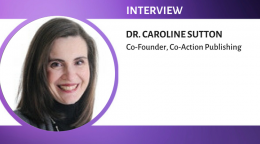An early career researcher's guide to open access publishing

Editor’s Note: This post was originally published in 2016 and has been refreshed for Open Access Week 2017.
In recent years, open access publishing has steadily gained momentum. Most journals and publishers today have open access channels and authors have the choice to publish open access. However, many authors, particularly those who are relatively new to academia, are still in a haze about open access publishing. What is open access publishing? What is the rationale behind open access publishing? What are the different venues for publishing open access? Such questions bother authors, and they are often skeptical about open access as there are several myths about it. This article aims to clear all doubts and provide the fundamentals of open access publishing.
What is open access?
Open access is built upon the idea that scientific research should be made freely available to all so that others can build upon it and help escalate scientific progress. Traditionally, the academic publishing industry has followed a subscription-based model. This model requires readers to pay for the content that they read. Typically, libraries purchase bulk subscription to a journal so that members or students can access the journals. But as subscription charges for journals started increasing, libraries found it increasingly difficult to purchase expensive journals. This was particularly true for libraries and institutions in developing countries where funding was scarce. As a result, researchers often could not access studies that they wished to, and this started affecting the progress of research. The need to remove this roadblock gave rise to the open access model of publishing in which readers have unrestricted and immediate access to research after it has been published with the permission to reuse it.
What are the different venues for open access publishing?
Broadly speaking, there are two models for open access publishing: gold and green.
Gold open access
In this model, open access journals give readers free access to peer reviewed articles, but the publication charges are borne by the author(s) (which in some cases might include the author’s institution or funder). Today, most big publishers offer open access options, and some, like PLOS, are purely open access. There are several major directories of open access journals, most notably Directory of Open Access Journals (DOAJ) which can help researchers identify open access journals in their field.
Under the gold open access model, authors have different kinds of journals to choose from:
Full open access journals: All articles published in such journals are freely available for readers on the journal website. Some of these journals are subsidized, and financed by an academic institution, a learned society, or by the government; but others may require the payment of a fee from the author(s), known as article processing charges (APCs) once the paper is accepted for publication.
Hybrid journals: Most of the articles in these journals are paywalled, with only some content open. Authors can choose to provide open access to their articles by paying an extra fee. This fee is generally known as open access fee. Some examples of hybrid open access journals are: iOpenAccess by Taylor Francis, Online Open by Wiley, or Sage Open by Sage.
Delayed open access journals: In this model, articles become free for readers some time after the initial publication. The time period for which the article is paywalled is known as embargo period. For most journals, the embargo period is six to twelve months.
Green open access
Under green open access, authors publish in subscription-based journals, but at the same time deposit their articles in an open access repository. This is known as self-archiving. Thus, although the journal is behind a paywall, readers have free access to the article through the repository. Authors who cannot pay the fees for publishing in open access journals often take this route. However, articles may not be peer reviewed prior to posting in a repository. Another point to be kept in mind is that not all subscription-based journals allow authors to post their paper on a repository. Authors should, therefore, check the website of their target journal to find out whether self-archiving is allowed, and preferably take the journal’s permission before self-archiving.
Open access repositories can be institutional or independent, subject-specific, such as bioRxiv, Nature Precedings, and PubMed Central, or multidisciplinary such as arXiv, Global Open Access Portal, and Zenodo. OpenDOAR is a directory of academic open access repositories that provides a list of repositories.
There are three basic versions of an article that can be self-archived in repositories:
Pre-Prints: This refers to the author's copy of the article before it has been peer reviewed.
Post-Prints: This also refers to the author's copy, but after it has been peer reviewed, with the suggested revisions incorporated, but before the publisher has formatted it for publication.
Publisher’s version: This refers to the final PDF of the article that is formatted and appears in print or online.
Popular misconceptions about open access
As mentioned at the outset, authors are often unsure about open access publishing. This is largely due to some popular misconceptions about open access in their minds. Let us try to dispel some of these myths:
1. Open access journals are not peer reviewed: This is an absolutely wrong idea. A journal’s peer review policy has nothing to do with its access policy. Most open access journals are peer-reviewed.
2. Open access journals have low impact factors: This is, once again, a myth. Many open access journals publish highly cited articles and receive high impact factors. For example, Living Reviews in Relativity has an impact factor of 32. Additionally, authors should remember that the impact factor is not the most reliable indicator of a journal’s quality.
3. Publishing in open access journals is expensive: Authors often avoid publishing in open access journals as they feel that they will not be able to afford the high APCs. However, the truth is that not all open access journals charge APCs, and the ones that do generally have the APCs clearly mentioned on their website. APCs vary across journals and are not always high. Additionally, many universities or funding bodies bear the APCs. Also, open access journals often waive fees for researchers in developing countries and those researchers who are in financial difficulty. For example, many Nature Publishing Group journals have an APC waiver policy.
4. Open access publishing does not offer copyright protection or credit to authors: In fact, for many open access journals, such as PLOS or BMJ, authors retain copyright after publication. Additionally most open access journals use Creative Commons licenses under which authors always receive credit when their work is reused.
As an early-career researcher, it is extremely important for you to recognize the importance of open access publishing. Science can progress only when immediate, unrestricted access to research is provided. We hope that in the coming years, researchers show more willingness to publish open access so that the scientific community, policy makers, and the general public can benefit from their research.
Related reading:
Published on: Oct 22, 2017
Comments
You're looking to give wings to your academic career and publication journey. We like that!
Why don't we give you complete access! Create a free account and get unlimited access to all resources & a vibrant researcher community.

Subscribe to Journal Selection
After writing a research paper, the next step is to find the right journal to publish it. Subscribe and get curated content to find the perfect journal that will give impetus to your research paper and your career.













